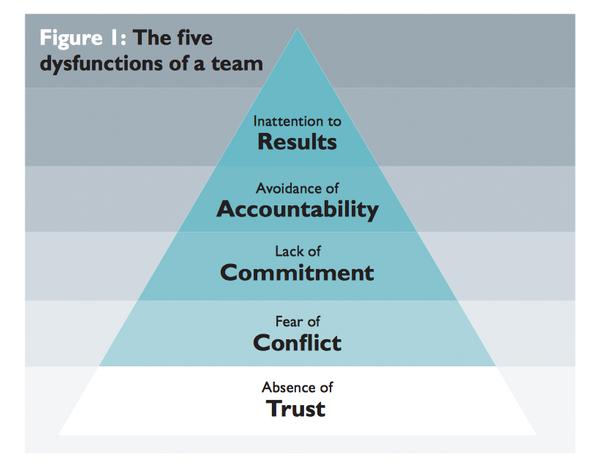When you Google ‘managing staff’, over 290,000,000 options pop up. Head to YouTube and there are 120,000 videos you can watch. The end result is information overload.
How you manage your team is your unique skill. It’s what your team will love and respect about you. And there isn’t a wrong way to do it – just different and perhaps enhanced ways. This article offers suggestions that you can morph into your own personality, allowing you to become the unique leader – not just a manager – of your team.
Management versus leadership
Regardless of your experience, when working with a team you will get better performance from leading them rather than managing them. But what exactly is the difference?
Managers have a tendency to tell their team what to do, and perhaps even when to do it, while a leader works with the team to design a plan. A manager might jump in and take over because that’s the easier option, while a leader will coach his troops to do the task. A manager will get frustrated or angry at mistakes; a leader accepts mistakes on the journey to peak performance.
In his book Leaders Eat Last, Simon Sinek explains that, in the US Marine Corp, the first people to eat at chow time are the lowest ranked. What’s symbolic in the chow hall is deadly serious on the battlefield: great leaders sacrifice their own comfort – even their own survival – for the good of those in their care.
This principle has been true since the earliest tribes of hunters and gatherers. It’s not a management theory – it’s biology. Our brains and bodies evolved to help us find food, shelter, mates and especially safety. We’ve always lived in a dangerous world, facing predators and enemies at every turn. We thrived only when we felt safe among our group.
Our biology hasn’t changed in 50,000 years, but our environment has. Today’s workplaces tend to be full of cynicism, paranoia and self-interest – the modern-world dangers. The best organisations foster trust and co-operation because their leaders build what Sinek calls a ‘circle of safety’ that separates the security inside the team from the challenges outside. The circle of safety leads to stable, adaptive, confident teams, where everyone feels they belong and all energies are devoted to facing the common enemy and seizing big opportunities.
As the leader of your team, your challenge is to build your own circle of safety by developing deep trust.
Building a team
In his book, Five Dysfunctions of a Team, Patrick Lencioni outlines – not surprisingly given the title – the five dysfunctions of any team (see Figure 1).
Similar to Sinek, Lencioni believes the most important way to build a team and drive maximum performance from them is to develop trust. Once trust is there, it’s possible to have open and honest discussions – around performance, for example – without your team fearing such ‘conflict’. They know these are constructive conversations that have no hidden agenda and thus shouldn’t be taken personally.
To help build trust among your team, you might consider introducing the concept of ‘rankings’ into team meetings. Have your team rank their work life, family life and personal life out of 10 and explain why they gave these scores. This will help each team member learn more about the others, and perhaps even understand what makes them tick.
Other tools include ‘Share Your Strength’, whereby team members share with the group, in two or three minutes, what they think their strengths are. You then go around the room and have each member of the team tell that same person what they think their strengths are.
Then there’s ‘Speed Dating’ – dividing your teams into two groups, with one group staying still while the other group moves on one place each time the bell rings. Propose one question for them to answer at each ‘date’. Questions may be work-orientated, scenario-based or personal. No more than 60 seconds on each date and go through the whole group.
Each team meeting should begin with this sort of trust-building exercise. The key is to be consistent with the exercises happening at every meeting. Trust needs to be part of your organisation’s DNA.
Meetings create momentum
Many teams criticise their managers for a lack of communication, so the easy solution is to create a meeting schedule to ensure there’s transparent communication, as well as opportunities for feedback and time for learning.
A suggested meeting schedule might include daily meetings. These must be short – perhaps a stand-up, five-minute daily huddle (two may be needed depending on shifts) – and they should adopt the same structure every day. It’s an agenda that’s actually just three items long:
- What’s up: Each attendee shares ‘what’s up’ for the next 24 hours. This lets people immediately sense conflicts, crossed agendas and missed opportunities. The key is for everyone to highlight specifics without simply reading out a ‘to do’ list.
- Daily measures: Next, review whatever daily measurements your company uses to track its progress, highlighting any unusual trends.
- Where are you stuck: You’re looking for bottlenecks. There’s something powerful in having your team members verbalise – for the whole group to hear – their fear, their struggle, their concern. It’s the first step to solving the problem, so scrutinise the person who reports “everything is fine!” or “no stucks today”.
In addition to these, weekly meetings should be focused on issues and strategy gathering, based on successful daily huddles.
The structure is simple:
- Five minutes – good news stories (personal or professional) from everyone, and fun in nature.
- 10 minutes – what are the numbers for the business in that week? Try to focus on three numbers that offer business insights.
- 10 minutes – look at feedback from team members and gym members. What issues constantly pop up or what are people hearing?
- 30 minutes – focus on just one large priority that needs to be worked on. This may not solve the priority, but will be something you chip away at.
Finally, the two-hour monthly meeting is all about learning – about you passing the culture or the DNA of the organisation to your team. You should review the income of the month, look at what is and isn’t working operationally, and develop your team through learning.
This type of schedule will create rhythm and certainty in your team – the foundation for building trust. Ultimately, if you care about your team and show your own vulnerability, they’ll trust you. When that trust is real, your team will engage and you can lead them. You may never need to manage them again.



























































